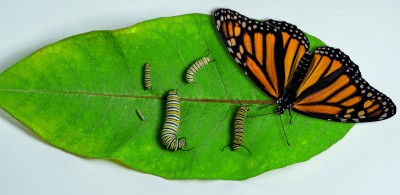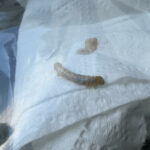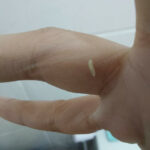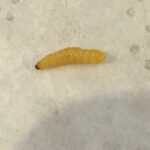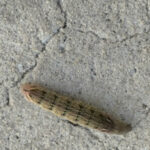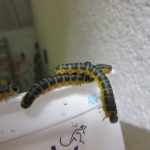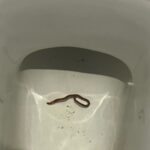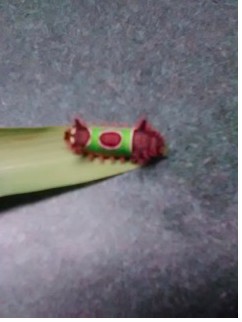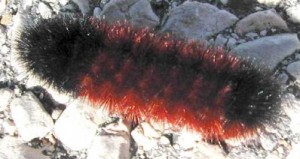
Here at All About Worms we spend most of our time discussing creatures that are not worms. Most of the questions we get from readers are about larvae and caterpillars (a caterpillar is the larval form of a moth or butterfly).
“Larva” is the term we use to describe the immature form of an insect. It typically looks a lot different from that adult form of the species. Specifically, the larva is the stage between the egg and pupa.
Below is a picture showing different instars of the Monarch Butterfly caterpillar, along with a mature adult. Given how different the adult looks from the larvae, it is natural to wonder how a caterpillar grows and becomes butterfly.

The typical life cycle of an insect (or arthropod) is very straightforward. An adult lays eggs. When mature, the larvae hatch from their eggs. The larvae begin eating and eating and eating (larvae eat a lot!). The larvae go through several instars (the stages between molting. You can learn about instars in our article What is an Instar?), growing bigger and bigger each time. Then, when the time is right, the larvae builds a cocoon (or chrysalis). A few months later, a butterfly comes out! What could be easier to understand?
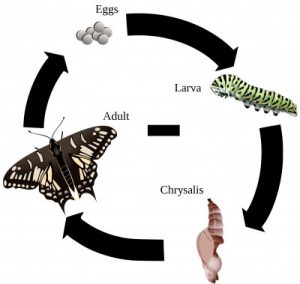

Okay, we’re kidding. The process of the larva building a cocoon (or chrysalis) and then coming out as an adult is not easy to understand at all.
So, what are cocoons, and what happens inside them?
A cocoon is a protective case that a larva builds around itself when it is ready to change from a larva to an adult. The material that the cocoon or chrysalis is made from varies from species to species, but they all serve the same purpose: to protect the animal as it changes.
Once the larva is safely enclosed in its cocoon or chrysalis, parts of its body begin to dissolve. If we were to cut a cocoon open and look inside, it would look like the larva was completely liquified, but that is not actually the case. In 2013, Tristan Lowe, Russell J. Garwood, Thomas J. Simonsen, Robert S. Bradley, Philip J. Withers used sophisticated imaging equipment to see what was happening inside a cocoon. They published their observations in the Journal of the Royal Society Interface.
They found that many of the vital organs stayed intact, but that they did undergo changes. For example, the larva’s stomach changed shape and shrank. The tracheal tubes, which the insect uses to breathe, grew larger.
Other parts of the caterpillar that were not dissolved include the imaginal discs. In the larval stage, these are small and unused. In the cocoon, they turn into body parts the adult needs that the larva did not have, like wings. Meanwhile, the body parts that the larva has that the adult will not need are dissolved.
Eventually, the adult is fully formed and it comes out of its cocoon. Depending on the species, the cocoon may be dissolved or the adult might cut its way out. Either way, the emerging adult looks nothing like the larva that went in!
Research continues so we better understand what happens in the cocoon, and we are excited to see what the researchers turn up next! Rest assured, we will be sure to keep our readers posted of any exciting developments!
All About Worms is always free, always reader-supported. Your tips via CashApp, Venmo, or Paypal are appreciated! Receipts will come from ISIPP Publishing.
You might also find these guys interesting!
